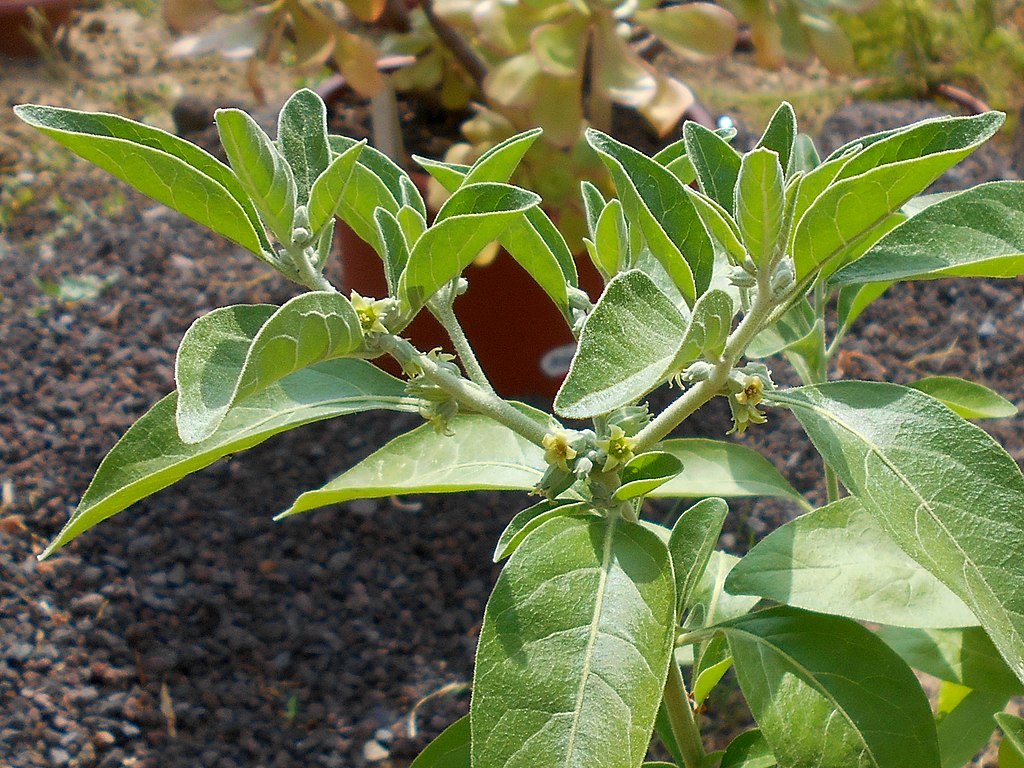The Ayurvedic herb ashwagandha has become quite well known in recent years and it is no wonder, for it has many important uses. Overall, it’s a wonderful anti-aging and rejuvenative tonic for most all folks and so deserves its growing reputation.
Specifically, it is a yang tonic (meaning it warms and strengthens the body’s energy and metabolism) that affects the kidneys and adrenals, it is a noted sexual tonic (especially for men), treating low libido and sexual performance. In fact, its name actually means “smells like a horse,” which not only refers to the smell of the fresh root but also for its ability to vitalize sexual ability. Further, its yang tonic action treats back and joint pain as well as low energy, weakness, memory loss, and general debility.
As an adaptogen, ashwagandha normalizes physiological function and the neuro-endocrine system (hormones). This helps in several ways as it both treats infertility (often a cause of kidney and adrenal yang deficiency) and treats a flipped sleep-wake cycle (awake at night but sleepy during the day) by normalizing cortisol. In fact, part of its name, somnifera, means “sleep-inducing” in Latin.
And that’s not all — ashwagandha is also wonderful for the nervous system, treating nerve diseases, nervous exhaustion, and anxiety as well as insomnia. Further, it lowers blood sugar for the treatment of type 2 diabetes and treats malnutrition.
But wait, there’s more. Ashwagandha not only acts on the kidney-adrenals but also the lungs, helping that important kidney-lung connection causing cough, asthma, and bronchitis. As well, it is used for psoriasis, hypothyroidism, anemia, and to lower cholesterol.
Last but not least, ashwagandha treats the side-effects of radiation and chemotherapy during cancer, no small feat indeed.
Interestingly, ashwagandha doesn’t just grow in India but its range extends west into much of Africa, although some sources say it even grows in the south of Europe along the Mediterranean. The leaves are used in Ayurvedic medicine for hemorrhoids, wounds, tumors, sores, rashes, and fever. In south Africa they are made into a poultice or ointment with fat or oil to treat open cuts, wounds, abscesses, inflammation, hemorrhoids, rheumatism, and syphilis.
While ashwaghanda seems the perfect herb for so many cases, it’s important to avoid using it during acute conditions such as colds, flu or fever, or if there’s lymphatic congestion or damp stagnation.
Many people don’t know that my husband, Michael Tierra, was actually the person who first circulated ashwgandha widely in the U.S. While in India many decades ago, he brought back a handful of ashwagandha seeds. When he planted them in our garden, he found they grew easily. Afterward, he gave many ashwagandha plants away for others to grow as well!
Ashwagandha’s energy is mildly warm. Its flavors are bitter and sweet.
The traditional Ayurvedic way to take ashwagandha root is as a decoction in water or milk: 1g per day for chronic conditions; 1-10g for acute conditions. Or, you can take it in an alcoholic tincture (1:2 @50% ABV fresh; 1:5 @50% ABV dry), 10- 60 drops three times a day.

